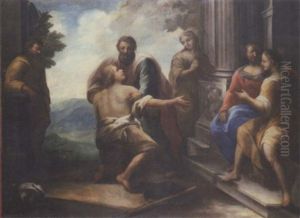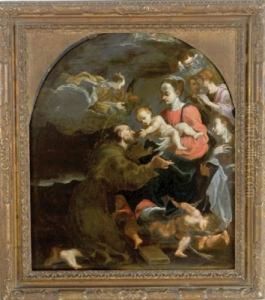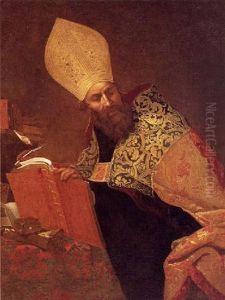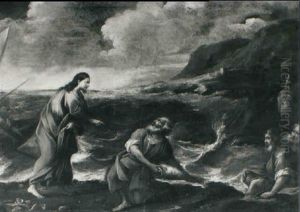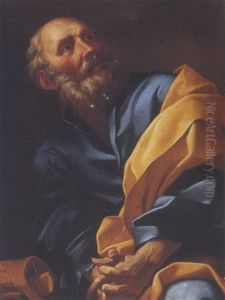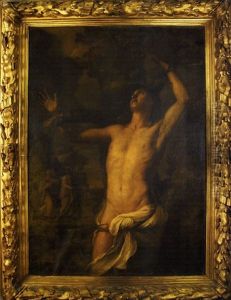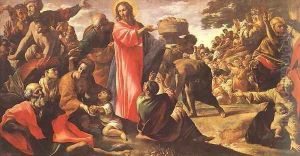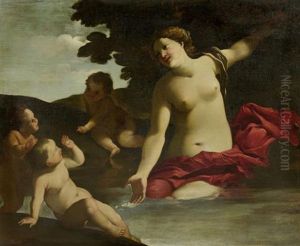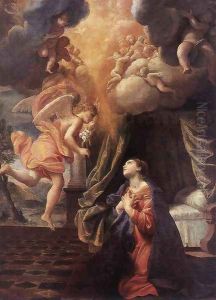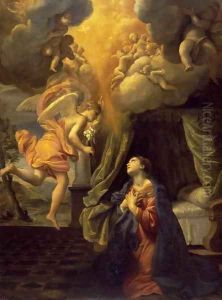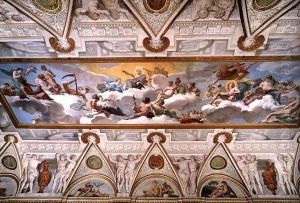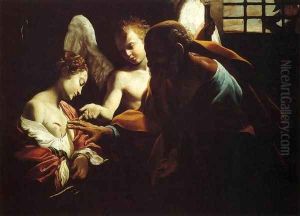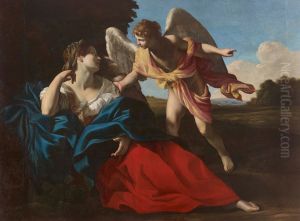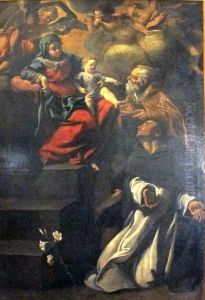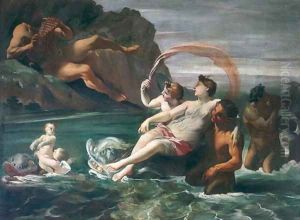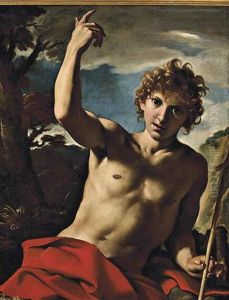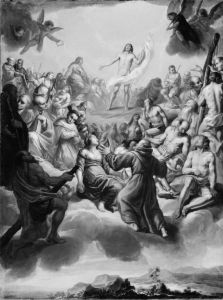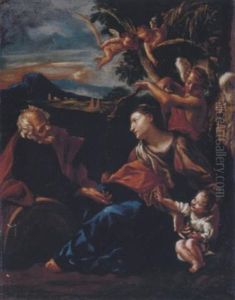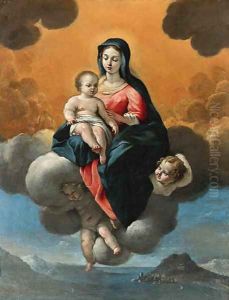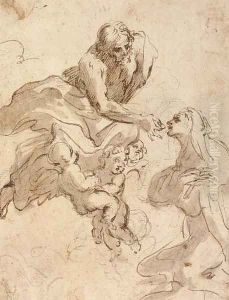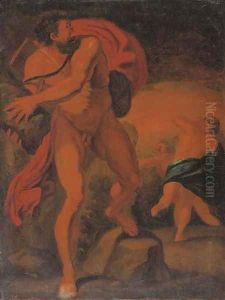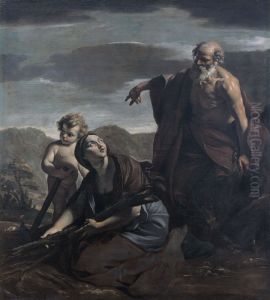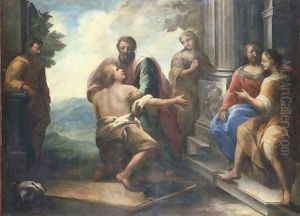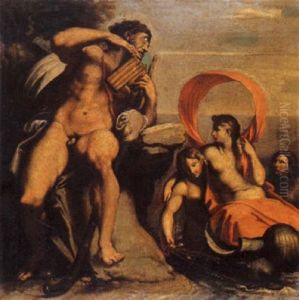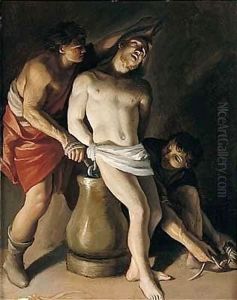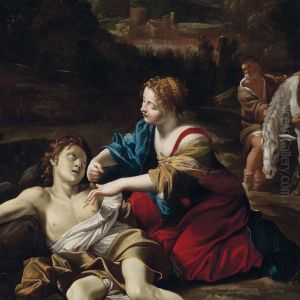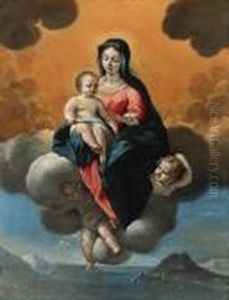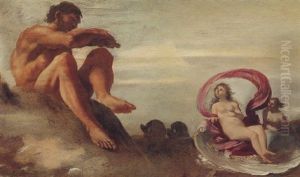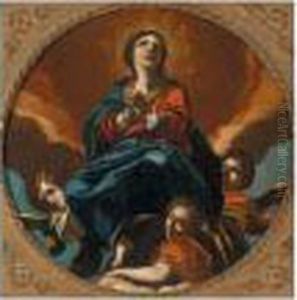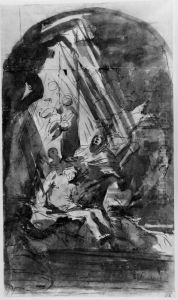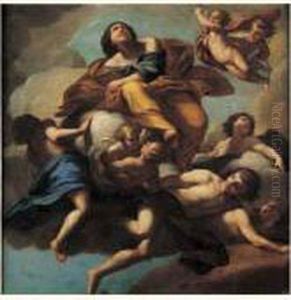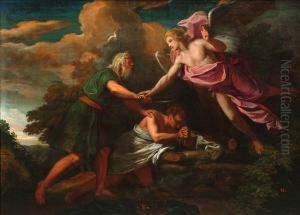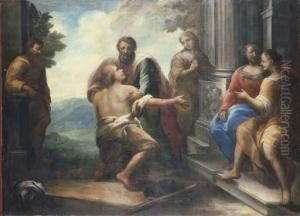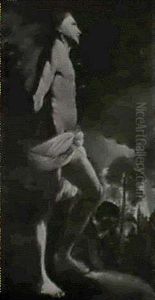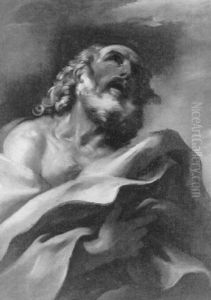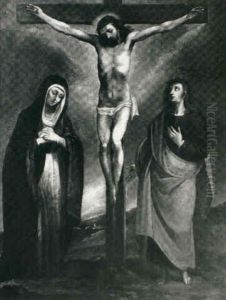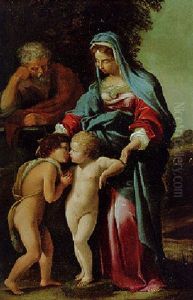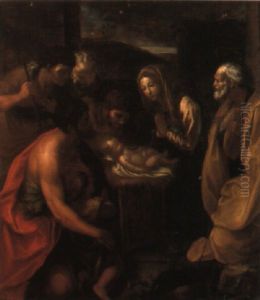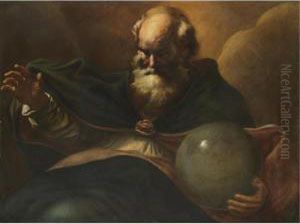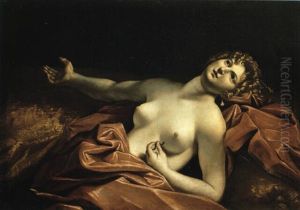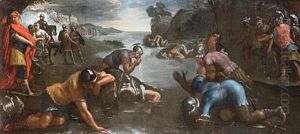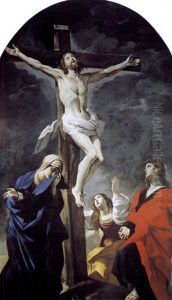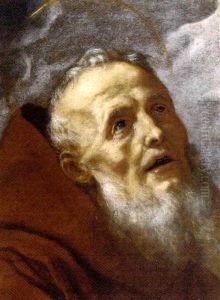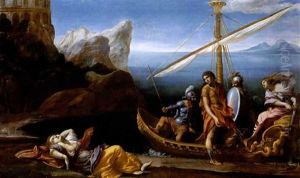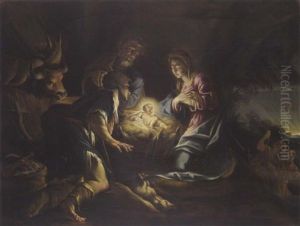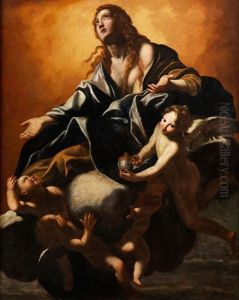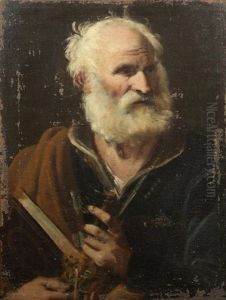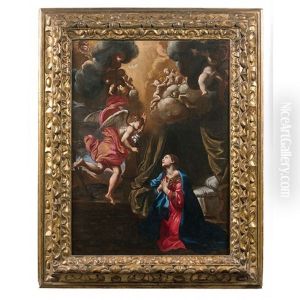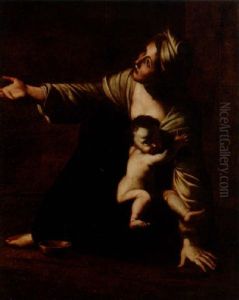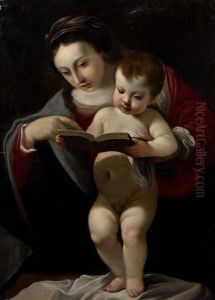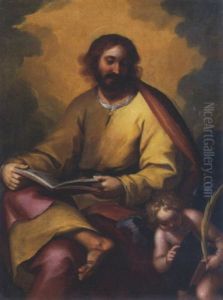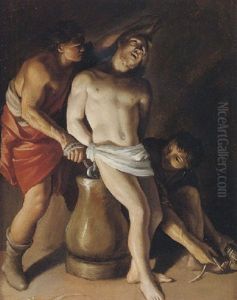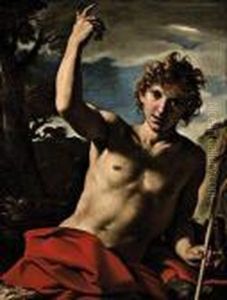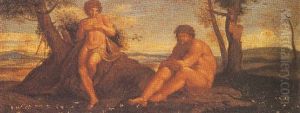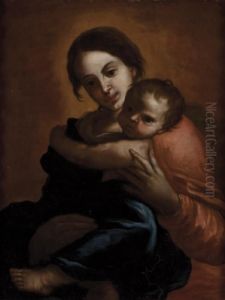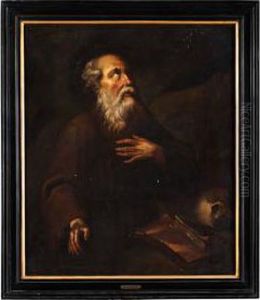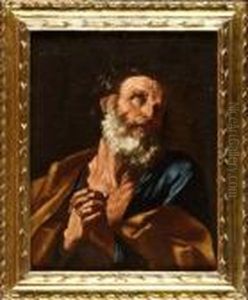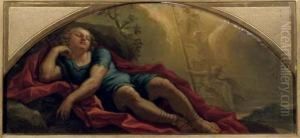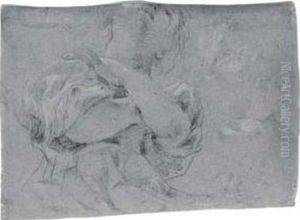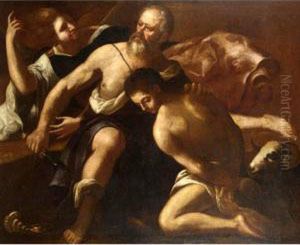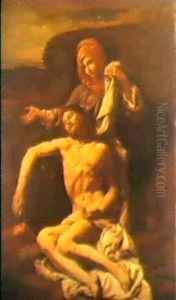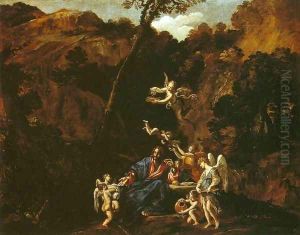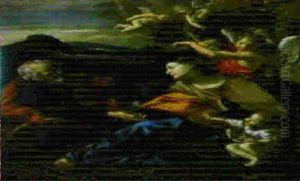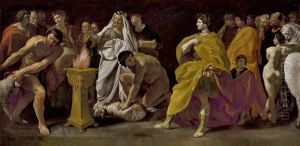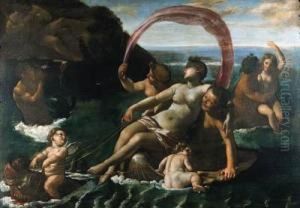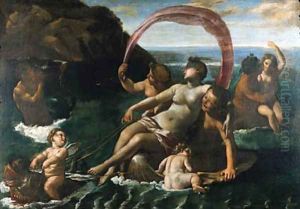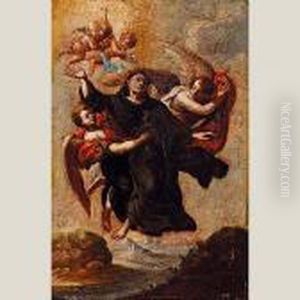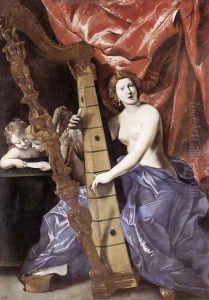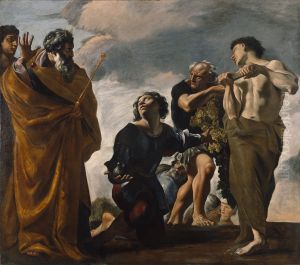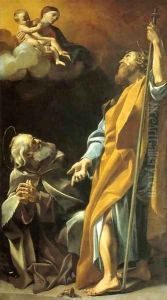Giovanni Lanfranco Paintings
Giovanni Lanfranco was an Italian painter of the Baroque period. Born in Terenzo, near Parma in 1582, he was one of the many talented artists to emerge from the Parma school. Lanfranco is best known for his grand, lively frescoes and for his contribution to the development of the Roman Baroque style.
Lanfranco initially trained under Agostino Carracci in Bologna, where he was influenced by the Carracci’s academic classicism. He moved to Rome around 1602, where he continued his artistic development under the guidance of Annibale Carracci and became involved in the decoration of the Farnese Gallery. His work during this period was characterized by a dynamic use of figures and a strong narrative quality.
After Annibale Carracci’s death, Lanfranco began to develop his own style, which was distinguished by a more free and expressive approach. He became known for his mastery in creating illusionistic ceiling frescoes using a technique known as quadratura, that integrate architecture with painted scenes to create an illusion of three-dimensional space.
One of Lanfranco's most famous works is the dome of Sant'Andrea della Valle in Rome, completed between 1621 and 1625. This work exemplifies his mature style and is considered a masterpiece of Baroque illusionistic painting. The frescoes depict scenes from the life of Saint Andrew and are remarkable for their dynamic composition and dramatic use of light and shadow.
Lanfranco also worked in Naples, where he contributed to the decoration of the San Gennaro chapel in the Cathedral of Naples, and in other regions of Italy. His work was influential in the development of Neapolitan painting, where his followers included artists such as Luca Giordano.
Throughout his career, Lanfranco was celebrated for his ability to transform interior spaces with his grand and imaginative frescoes. He was a contemporary of other Baroque masters such as Caravaggio and Pietro da Cortona, and while he may not be as widely known today, his work was instrumental in the development of the Baroque style in Italian art.
Giovanni Lanfranco passed away in Rome in 1647, leaving behind a legacy of works that continue to be admired for their vibrancy, technical skill, and innovative approach to painting.
